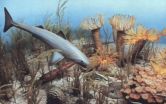(Press-News.org) EL PASO, TX – To conserve dwindling water resources, municipalities are encouraging the use of "recycled water", municipal wastewater that has been extensively treated and deemed safe to reuse for irrigation and other purposes. Using recycled water can be cost-effective and helps conserve the potable supply. In areas of the U.S. where production of bedding plants means income and jobs, commercial growers are looking for ways to use reclaimed or recycled water for irrigation, but using recycled water does not come without challenges. The water can contain high levels of salt, presenting obstacles for commercial operations. New research from Texas A&M University provides bedding plant growers with important data about ten common species/cultivars.
"As more low-quality water is used for landscape irrigation, demand for salt-tolerant bedding plants will increase in arid and semiarid regions. Currently, little information is available on salt tolerance of bedding plants", explained Genhua Niu, lead author of a new study published in HortScience. The researchers sought to quantify the relative salt tolerance of 10 bedding plant species and cultivars whose performance ranged from acceptable to excellent under limited irrigation conditions in a semiarid desert environment. In the study, the same 10 species and cultivars were irrigated with water at various salinity levels in two experiments conducted in a summer shadehouse or a winter greenhouse.
To maintain a desirable compact growth habit in ornamental plants, growers traditionally prune ornamentals or treat them with growth regulators. Interestingly, some herbaceous perennials, groundcovers, floricultural crops, and landscape woody shrubs became more compact when irrigated with low to moderate salinity, showing that reclaimed water may play an important role for landscape irrigation where the supply of high-quality water is limited. "The salinity tolerance range or threshold for optimal growth and quality of landscape plants needs to be identified for efficient and sustainable use of reclaimed water", stated Niu.
For the study, bedding plants were irrigated with saline solution to simulate the composition of local reclaimed water. The salt tolerance of plants varied with species and cultivars. Ornamental pepper 'Black Pearl' was most sensitive to salt stress based on its greater growth reduction in both experiments and high accumulation of chlorine in leaves compared with other plants.
"In general, the bedding plants tested in this study are moderately tolerant to salt stress and may be irrigated with saline water up to 4.0 dS·m with little reduction in aesthetic appearance. It is possible that plant response to salinity stress may be modified by soil type in a landscape situation", the study concluded.
###
The complete study and abstract are available on the ASHS HortScience electronic journal web site: http://hortsci.ashspublications.org/cgi/content/abstract/45/4/628
Founded in 1903, the American Society for Horticultural Science (ASHS) is the largest organization dedicated to advancing all facets of horticultural research, education, and application. More information at ashs.org
Can bedding plants thrive with recyled water?
Salt tolerance investigated for 10 species, cultivars
2010-12-31
ELSE PRESS RELEASES FROM THIS DATE:
April grafting optimal for Fraser fir
2010-12-31
RALEIGH, NC – Christmas trees provide a significant source of revenue in southern Appalachia, resulting in millions of dollars in sales during the holiday buying season. The most popular species in the region is fraser fir, appreciated for its fragrance and consumer-friendly traits such as soft needles, strong branches, exceptional needle retention, and natural Christmas tree shape. Frasers, indigenous to isolated high-elevation mountains in southwestern Virginia, western North Carolina, and eastern Tennessee, are under attack by a pathogen called Phytophthora cinnamom, ...
Large-scale analysis identifies new genetic alterations associated with height
2010-12-31
A large collaborative study has added to the growing list of genetic variants that determine how tall a person will be. The research, published by Cell Press on December 30 in the American Journal of Human Genetics, identifies uncommon and previously unknown variants associated with height and might provide insight into the genetic architecture of other complex traits.
Although environmental variables can impact attained adult height, it is clear that height is primarily determined by specific alleles that an individual inherits. Height is thought to be influenced by ...
New test announced for major killer of lung transplant patients
2010-12-31
ANN ARBOR, Mich. — A lung transplant can mean a new chance at life. But many who receive one develop a debilitating, fatal condition that causes scar tissue to build up in the lungs and chokes off the ability to breathe.
University of Michigan researchers hope a new diagnostic tool they developed to predict bronchiolitis obliterans syndrome (BOS) will allow doctors to intervene earlier and, ultimately, to provide life-saving treatments.
BOS is the leading cause of death for those who survive one year after lung transplantation and more than half of recipients will develop ...
First come, first served?
2010-12-31
Emergency department overcrowding can result in long waiting times for seriously ill patients. They then compete with patients with less severe illnesses for the next available treatment. In this edition of Deutsches Ärzteblatt International (Dtsch Arztebl Int 2010; 107[50]: 892), Michael Christ and his coauthors provide an overview of current practice for initial assessment of emergency patients.
Triage provides reliable methods that can be used to assess the severity of an illness and the urgency of treatment in emergency departments.
In English-speaking countries, ...
What triggers mass extinctions? Study shows how invasive species stop new life
2010-12-31
An influx of invasive species can stop the dominant natural process of new species formation and trigger mass extinction events, according to research results published today in the journal PLoS ONE.
The study of the collapse of Earth's marine life 378 to 375 million years ago suggests that the planet's current ecosystems, which are struggling with biodiversity loss, could meet a similar fate.
Although Earth has experienced five major mass extinction events, the environmental crash during the Late Devonian was unlike any other in the planet's history.
The actual number ...
Was Israel the birthplace of modern man?
2010-12-31
Tel Aviv ― It has long been believed that modern man emerged from the continent of Africa 200,000 years ago. Now Tel Aviv University archaeologists have uncovered evidence that Homo sapiens roamed the land now called Israel as early as 400,000 years ago ― the earliest evidence for the existence of modern man anywhere in the world.
The findings were discovered in the Qesem Cave, a pre-historic site located near Rosh Ha'ayin that was first excavated in 2000. Prof. Avi Gopher and Dr. Ran Barkai of Tel Aviv University's Department of Archaeology, who run the excavations, ...
New technology to speed cleanup of nuclear contaminated sites
2010-12-31
CORVALLIS, Ore. – Members of the engineering faculty at Oregon State University have invented a new type of radiation detection and measurement device that will be particularly useful for cleanup of sites with radioactive contamination, making the process faster, more accurate and less expensive.
A patent has been granted on this new type of radiation spectrometer, and the first production of devices will begin soon. The advance has also led to creation of a Corvallis-based spinoff company, Avicenna Instruments, based on the OSU research. The market for these instruments ...
Risk for alcoholism linked to risk for obesity
2010-12-31
AUDIO:
Addiction researchers at Washington University School of Medicine in St. Louis have noticed an unexpected link between alcoholism risk and obesity. They report when a person has a genetic risk...
Click here for more information.
Addiction researchers at Washington University School of Medicine in St. Louis have found that a risk for alcoholism also may put individuals at risk for obesity.
The researchers noted that the association between a family history of alcoholism ...
GOES satellites watch 2011 approach, look back at 2010
2010-12-31
The GOES series of satellites keep an eye on the weather happening over the continental U.S. and eastern Pacific and Atlantic Oceans and had a busy time with wild weather in 2010. Today, GOES-13 captured one of the last images of North and South America in 2010 as the world continues to turn toward 2011.
The Geostationary Operational Environmental Satellite called GOES-13 satellite captured a "full-disk image" of North and South America in an image created December 30 at 1445 UTC (9:45 a.m. EST) as the world awaits the new year. The stunning image shows cloud cover associated ...
TRMM satellite sees system 98s raining on western Australia
2010-12-31
System 98S is currently bringing rains and gusty winds to the northwestern coast of Western Australia, and NASA's Tropical Rainfall Measuring Mission satellite spotted areas of moderate to heavy rainfall in the system.
NASA's TRMM satellite captured an image of System 98S' rainfall when it passed overhead in space on Dec. 30 at 1310 UTC (8:10 a.m. EST). TRMM is a joint mission between NASA and the Japanese space agency JAXA that can estimate rainfall in a tropical cyclone from its vantage point in space.The heaviest rainfall was occurring over the Southern Indian Ocean ...
LAST 30 PRESS RELEASES:
Age-related changes in sperm DNA may play a role in autism risk
Ambitious model fails to explain near-death experiences, experts say
Multifaceted effects of inward foreign direct investment on new venture creation
Exploring mutations that spontaneously switch on a key brain cell receptor
Two-step genome editing enables the creation of full-length humanized mouse models
Pusan National University researchers develop light-activated tissue adhesive patch for rapid, watertight neurosurgical sealing
Study finds so-called super agers tend to have at least two key genetic advantages
Brain stimulation device cleared for ADHD in the US is overall safe but ineffective
Scientists discover natural ‘brake’ that could stop harmful inflammation
Tougher solid electrolyte advances long-sought lithium metal batteries
Experts provide policy roadmap to reduce dementia risk
New 3D imaging system could address limitations of MRI, CT and ultrasound
First-in-human drug trial lowers high blood fats
Decades of dredging are pushing the Dutch Western Scheldt Estuary beyond its ecological limits
A view into the innermost workings of life: First scanning electron microscope with nanomanipulator inaugurated in hesse at Goethe University
Simple method can enable early detection and prevention of chronic kidney disease
S-species-stimulated deep reconstruction of ultra-homogeneous CuS nanosheets for efficient HMF electrooxidation
Mechanical and corrosion behavior of additively manufactured NiTi shape memory alloys
New discovery rewrites the rules of antigen presentation
Researchers achieve chain-length control of fatty acid biosynthesis in yeast
Water interactions in molecular sieve catalysis: Framework evolution and reaction modulation
Shark biology breakthrough: Study tracks tiger sharks to Maui mating hub
Mysterious iron ‘bar’ discovered in famous nebula
World-first tool reduces harmful engagement with AI-generated explicit images
Learning about public consensus on climate change does little to boost people’s support for action, study shows
Sylvester Cancer Tip Sheet for January 2026
The Global Ocean Ship-Based Hydrographic Investigations Program (GO-SHIP) receives the Ocean Observing Team Award
Elva Escobar Briones selected for The Oceanography Society Mentoring Award
Why a life-threatening sedative is being prescribed more often for seniors
Findings suggest that certain medications for Type 2 diabetes reduce risk of dementia
[Press-News.org] Can bedding plants thrive with recyled water?Salt tolerance investigated for 10 species, cultivars




